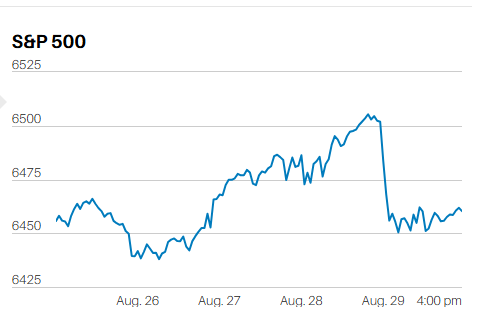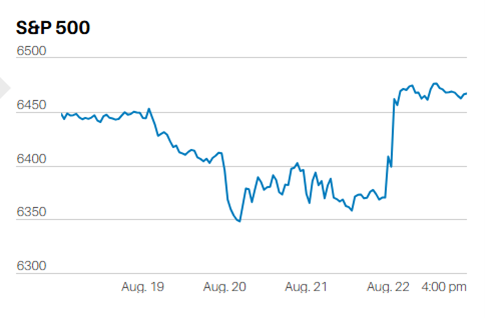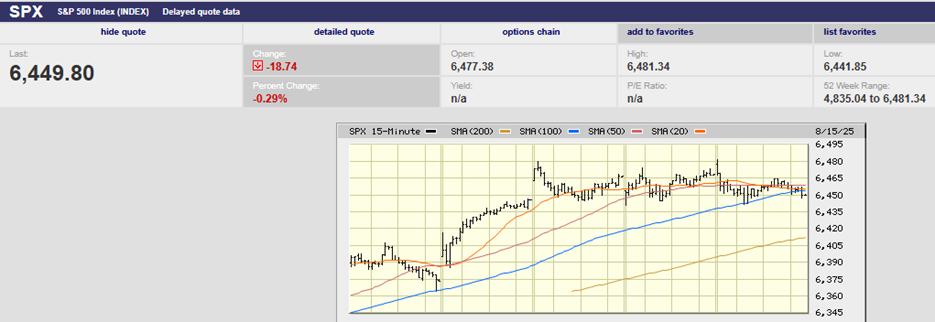Value Investing 101

Market Update
The S&P 500 rose 6.4% last week to finish at 3911.74. The index struggled with 3780- 3800 for three days before gapping up at the open on Friday. The gap opening cleared resistance and it was off to the races. The S&P finished within striking distance of the 20-day moving average at 3950. The 50-day sits at 4060. The S&P will need to climb above 4177 to have a shot at a sustained rally.
We wrote last week, “The type of lopsided selling noted by Sundial Capital often means a bear market rally is in the offing. Expect an oversold bounce this week.” We are getting the expected oversold bounce. Now we’ll see how far it can go. It would be surprising to see the S&P 500 make it through 4,200 before heading back down, although it’s not out of the question.
The long-term trend is down. The S&P will retest last week’s 3636.87 low, likely in the next few weeks. Earnings estimates are still too high. A slowing economy and margin compression mean disappointment when the next earnings season commences in a few weeks. End-of-quarter rebalancing by institutional investors should put a bid under the market in the meantime. Expect more upside testing early this week. Also, expect the bear market rally to fizzle out by the weekend. Thursday is the last day of the quarter and rebalancing should be complete by then. A sell-off Friday heading into the 4th of July weekend wouldn’t be a surprise at all.
Economic Indicators
The Chicago Fed national activity index (CFNAI) was 0.01 in May down from 0.40 in April. A positive number indicates above-trend growth. The index is composed of 85 separate indicators. It is intended as a leading indicator of economic activity. Jerome Powell spoke Wednesday and Thursday. He indicated that a soft landing would be difficult to achieve. The Fed has had little success with soft landings in the past, managing it only once before in 1994.
Looking for a fundamental reason why the S&P gapped up at the open on Friday? Powell’s negative testimony isn’t it. Instead, the Friday rally was likely due to market makers covering short stock positions. The short positions are held to hedge long exposure in the options market. The derivatives markets are often the true source of stock market volatility. Most short-term market movements have nothing to do with fundamentals.
Initial jobless claims were 229,000 last week down from 231,000. The S&P Global U.S. manufacturing PMI in June was 52.4 down from 57.0 the prior month. Any reading over 50 indicates expansion. The S&P Global U.S. services PMI was 51.6 in June down from 53.4. Both S&P indicators show slowing growth but still growth. The UMich consumer sentiment index for June was a record low 50.0. Inflation fears were fingered as the primary reason. The consumer sentiment reading is at a level that normally signals a recession is coming.
Growth is slowing. The Federal Reserve is raising interest rates and shrinking its balance sheet. A recession later this year or in 2023 is increasingly likely. A mild recession in which the economy contracts a few percent over a couple of quarters is most likely. The banking system is strong. The Covid flash recession was only two years ago. The economy hasn't had time to build up large excesses in the interim. The stock market has likely priced in a mild recession. The S&P 500 could fall to 3200 before the decline is over. It would represent a fall of 34% from the S&P’s all-time high. It would also only take another 12% decline from the Friday 17 June low.
Investing Moves
We sold Merck (MRK) and Vertex (VRTX) on Friday. Merck is a global healthcare company. Pharmaceutical sales represent 88% of revenue and animal health the other 12%. We first bought the stock in December of 2020. Most clients earned around 23% from the stock over the approximately 18-month holding period, before dividends. The dividend payout was approximately $4 per share during the holding period adding another 5% to returns. Total returns of approximately 28% over 18 months comes to an annualized return of 19%. The 19% return is approximately twice the long-run rate of return of the S&P 500. Value Line has Merck with a beta of 0.80, which means the stock is approximately 80% as volatile as the S&P 500. The risk-adjusted return for our clients was, therefore, closer to 24%. On a risk-adjusted basis, our investment in MRK was 140% better than the S&P 500’s long-term return.
VRTX is a biotech company that dominates the cystic fibrosis market. It also has a broad pipeline of investigational drugs including for pain, kidney disease, and sickle cell disease. We bought the stock in March of 2021. Most clients earned around 32% over the 16-month holding period for a 24% annualized return. VRTX is only one of two stocks we own(ed) that did not pay a dividend. Value Line has VRTX with a beta of 0.75 which means it is only 75% as volatile as the stock market. VRTX returned 32% on a risk-adjusted basis or 222% of the long-run return for the S&P 500.
Value investing is about finding good companies on sale. We want companies that have a good to great balance sheet, pay an above-average dividend, and are trading for less than they are worth as a company. We sell them when they return to fair value. We aren’t swinging for the fences. We aren’t trying to find the next Microsoft, Google, or Tesla. We are trying to buy profitable businesses that have a high likelihood of continuing to grow those profits.
And that brings me back to a point I’ve been having to make to 401(k) plan participants more and more often in the last few months. Increasingly they are afraid that their portfolios will go to zero. The U.S. stock market isn’t going to zero. Corporate profits will grow if the U.S. economy is growing. The stock market will go up if corporate profits grow. The stock market can fall for a while. Bear markets are a reality of investing. But the stock market will always go higher eventually as long as the economy and corporate profits are growing. Don’t ever forget that stock is ownership in a business. America has some of the best businesses in the world.
Regards,
Christopher R Norwood, CFA
Chief Market Strategist











